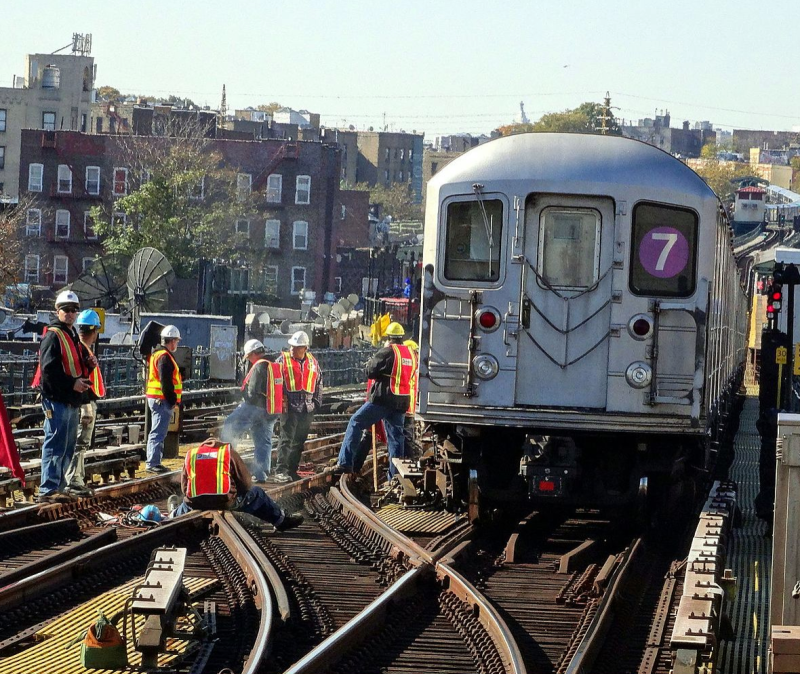A once-divisive baseline infrastructure bill is quickly transforming into the game-changing legislation America needs to shift the country away from car dominance, many advocates say.
After a grueling 19-hour markup session in the House Transportation and Infrastructure Committee, the $547-billion INVEST in America Act — the Congressional Democrats’ answer to baseline surface transportation spending over the next five years — will now advance to the full House. The foundational legislation would fund and set the rules for the core federal programs that shape the transportation landscape after the expiration of the current surface transportation bill, the FAST Act, this September.
The INVEST Act is a critical companion to the massive infrastructure stimulus package, the American Jobs Plan, that President Biden is still fighting to pass. (If you’re fuzzy on how infrastructure stimulus is different than surface transportation authorization, here’s a breakdown.)
Though it's the subject of rapturous excitement now, the INVEST in America Act began its journey to becoming law last spring as a more modest $494-billion package that drew a mixture of applause and concern from sustainable transportation advocates. On the one hand, the original INVEST Act offered historic investments into active transportation infrastructure and vulnerable road user safety, while requiring states to fix existing highways before building new ones — two core features that have survived in the revised legislation.
On the other hand, the legislation was dinged by some for its hefty electric vehicle charging subsidies, as well as strong, but not spectacular, commitments to funding transit.
But nearly a year later, INVEST 2.0 has been fleshed out and amended into what Rails-to-Trials’ spokesperson Brandi Horton is calling “arguably the most transformative transportation bill of our lifetimes,” particularly for the ways in which it “centers active transportation as essential to the nation’s transportation future.”
Here are a few of the highlights.
- $10 billion for active transportation infrastructure: Both versions of the INVEST Act upped funding for micromobility lanes and sidewalks, but the redux goes a step further by providing a cool billion over the course of five years specifically for connecting disjointed segments of cities’ active transportation networks. That’s been high on activists’ wishlists for a long time, and its inclusion brings the total dollar amount for active transportation infrastructure up to an estimated $10 billion across all programs. That’s a huge bump from the roughly $900 million those modes get now between the two largest federal programs.
- The death of the 85th percentile rule — and other critical MUTCD reforms: The original INVEST Act was introduced several months before safe streets advocates flooded the public docket with comments on the Manual of Uniform Traffic Control Devices, a formerly obscure technical manual that sets guidelines for signs, signals, and markings on U.S. roads. Some of the most important signs on the road, of course, are speed limit signs, and the MUTCD advises communities to set those limits at 85 percent of the speeds that the average driver actually travels, even if that speed is lightning-fast, rather than based on what’s actually safe for all road users. The INVEST Act would explicitly eliminate that rule, and require a slate of other safety-first changes to the manual.
- A new requirement to measure access — not just driver speed: Steve Davis at Transportation for America’s coverage of this feature of the INVEST Act is pretty perfect, so we’re just going to quote him:“The current federal transportation program does not require that states actively improve access to jobs and services for the real people who use the system every day. Say what? This is why the bulk of transportation funding goes toward increasing vehicle speed, a ‘goal’ that focuses on concrete and steel instead of the needs of actual people and where they need to go. ... Under the House bill, state departments of transportation and regional planning organizations would have to measure whether all people traveling (not just driving) can reach jobs, schools, groceries, medical care, and other necessities. Further, states and MPOs would have to project the impact their projects would have on access and USDOT will review and publicly report their targets and progress."
- The end of the 80/20 split: One of the most exciting amendments in the INVEST Act is also one of the wonkiest: amendment 26 by Rep. Chuy Garcia (D-Ill.), which would bring about the end of the infamous 80/20 split. Since the Reagan days, Departments of Transportation have been restricted from spending more than 20 percent of Highway Trust Fund revenues on transit projects, despite the fact that many experts say the highway maintenance backlog (not to mention greenhouse gas emissions) will never shrink until we start increasing transit usage by investing in shared modes. This sprawling amendment would end that practice and set better standards around how highway trust fund money could be used, a move that could create a path parity between the modes that’s long overdue.
- A 61-percent funding boost for transit — including operations funding: Under our current surface transportation bill, every transit agency in America is forced to share a relatively paltry $13 billion in federal money — and virtually none can be used for operational expenses that keep buses and trains running during, for instance, a global pandemic that drains the farebox.The INVEST Act solidifies the importance of transit by upping that funding to over $21 billion, and for the first time, allowing some of those funds to be used for day-to-day operations rather than simply to build and buy new things. Some advocates, though, think that’s not good enough – which is why they’re celebrating yesterday’s introduction of the Stronger Communities Through Better Transit Act, which would provide a whopping $80 billion across four years explicitly for shared transportation. Some are hoping it will be amended into the INVEST Act as a counterweight to the bill’s (still) robust funding for electric car charging.“While the adoption of electric vehicles will be crucial to our success, we need to go beyond simply putting a battery in all of our personal cars if we are going to transform our country’s transportation system,” said Lisa Frank of the U.S. Public Interest Research Group, in a statement in support of the bill. “To do this, we need to reduce the need to drive by expanding and electrifying public transit service so that the easiest, cheapest and most pleasant ways to travel are also the healthiest and most sustainable.”






